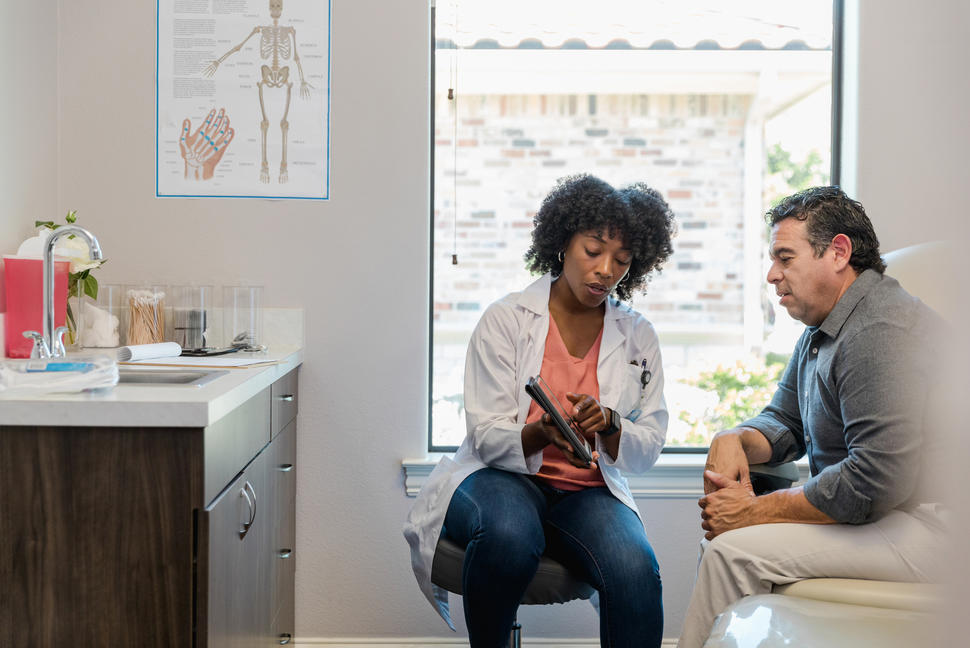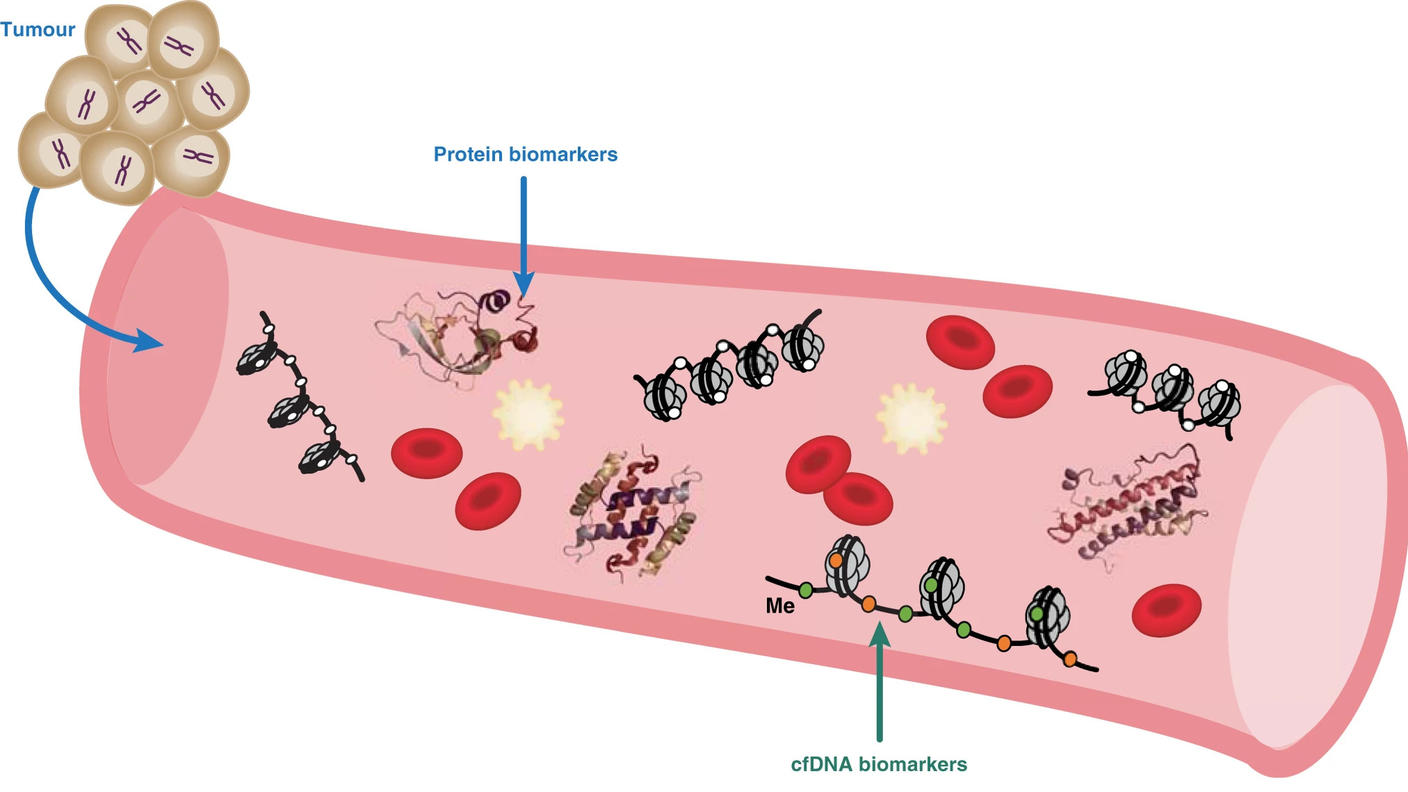Can Cancer Prevention Be Better Integrated into Primary Care?
, by Carmen Phillips
Having lost her father to cancer at the age of 3, by the time Adeola Fakolade, M.D., M.P.H, was 5 or 6, she already knew that she wanted to be a doctor when she grew up.
After graduating from medical school in her native Nigeria, she came to the United States to complete her medical education and training. A few years ago, that work led her to Ashtabula Medical Center, a community hospital an hour northeast of Cleveland.
From the beginning of her medical training, she said, there was little question that she was destined for primary care, where she knew she could pursue her interest in cancer prevention.
“I’ve always liked stepping back and looking at the big picture,” Dr. Fakolade said.
Like many other primary care clinicians, she faces the challenge of a heavy patient load, typically seeing anywhere from 17 to 22 people a day. Many of those visits are to address acute medical problems, like an aching back or spiking blood pressure.
But, as time and opportunity permit, she does what she can to talk with her patients about the bigger-picture matters that can affect their future health. An important one is cancer.
“I try to do a little of that in every encounter with my patients,” she said. “’You smoke? Let’s talk about that. How long have you smoked? Do you know what it’s doing to you?’”
Primary care clinicians are many people’s first of line defense against cancer. That’s a big job, and a tough one. Aside from helping to manage their patients’ diabetes or figure out if a nasty cough is because of a garden-variety cold or something more sinister, they’re dealing with health insurers, staying up to date on the latest studies and changes in care, and otherwise navigating the dense bureaucracy of modern health care.
“The environment for primary care providers is very different [than it used to be] because there are so many constraints now,” said Nereida Correa, M.D., a primary care physician at the Jacobi Medical Center in the Bronx section of New York, and a professor at Albert Einstein College of Medicine. “There is more pressure to see people in a shorter length of time.”
And particularly because most patients are coming in for an acute health problem, Dr. Correa continued, “it's not easy to start talking about preventive care.”
In 2021, NCI sponsored a roundtable that brought together leaders in primary care, representing internal and family medicine and specialties like gynecology and urology that often assume some primary care–like duties. The roundtable was designed to take a deep dive into the specific barriers and challenges of better integrating cancer prevention in primary care practice, and then use that discussion to identify important research needs moving forward.
As the summary of the workshop’s discussions revealed, however, there were some common themes that are all too familiar to physicians and other clinicians who spend every day in the primary care trenches.
Issues like the challenges of communicating clearly with patients and the role of—and struggles with—electronic health records (EHRs), among others, came to the fore, said Goli Samimi, Ph.D., M.P.H., of NCI’s Division of Cancer Prevention, who helped organize the workshop.
Overall, Dr. Samimi said, it captured the reality of modern-day primary care and what it means to integrate a complex topic like cancer prevention into it.
Addressing cancer prevention in primary care “is definitely more than just telling people to get screening [tests],” Dr. Samimi said.
Assessing a patient’s cancer risk
When it comes to cancer prevention, one of the most challenging tasks for primary care clinicians is establishing a baseline for an individual patient’s cancer risk. That includes asking about their risk factors: Do they smoke or use other tobacco products? How’s their diet? Do they have family members who have had cancer?
A family history of cancer is among the most crucial risk factors, because when it’s present, it suggests a potential underlying genetic risk. But figuring out if a patient has a family history is not always easy.
“In day-to-day practice, getting a … family [health] history is more like a rough assessment,” Dr. Fakolade explained. Some patients are very familiar with that history, quickly identifying family members who had cancer, including the specific cancer.
But many of her patients aren’t clear on their family history. Even if they know a family member had cancer, they often aren’t sure what kind.
In those cases, she said, “I will ask them to talk with their family about what cancers others in the family had,” and then report back the next time she sees them.
To help doctors get a better sense of an individual patient’s likelihood of developing cancer later in their lives, researchers have developed tools that capture specific information and then translate it into a risk score. For example, there are several tools for assessing breast cancer risk, including one developed by NCI and a second developed by an NCI-funded research consortium.
Those tools can then be used to guide potential preventive and early detection measures. For example, women considered to be at higher risk for breast cancer can be prescribed the drugs tamoxifen or raloxifene to help reduce that risk.
But several studies conducted in the 2000s found that cancer risk assessment tools aren’t commonly used in everyday primary care. And there’s limited data on whether things have improved since then.
Marilyn Schapira, M.D., a primary care physician and researcher at the Philadelphia Veterans Medical Center, has conducted research on cancer risk assessment tools. In daily practice, they can be impractical to use, Dr. Schapira acknowledged. That doesn’t mean the topic is something she ignores.
“I may go to a deeper level with some [patients] about their individual risk,” she said. But often, she noted, there is little time or opportunity to use risk assessment tools with patients in the office.
During the NCI-sponsored roundtable, participants also highlighted other issues with most risk-assessment tools. For instance, many haven’t been adequately tested in people from underrepresented groups, including African American and Hispanic populations. And some of the tools now incorporate complicated genetic testing, the report stated, which isn’t broadly available and requires a “time commitment” for both clinicians and patients.
Bridging the great divide of physician-patient communication
“I think a lot of my own personal decision-making process is based on a conversation I would have with a doctor that I trust. If he thinks it's a good idea, I would just do it.”
This comment, made by a middle-aged man who participated in an NCI-led focus group about drugs that can reduce cancer risk, reinforces something that numerous studies have found.
“People really rely on the recommendations of their doctors” when it comes to their health behaviors, Dr. Samimi said.
It also highlights one of the biggest barriers that primary care clinicians cite when asked about integrating discussions about disease prevention into their daily practice. Because of challenges like time constraints, limited health literacy, and rampant misinformation on social media, effective communication between doctors and their patients can be difficult.
And there can be additional challenges, Dr. Correa said. The part of New York where she practices, with people from many different cultures and ethnicities, offers a perfect example.
“When you're dealing with diverse communities, sometimes people have a hard time understanding [medical terms] or they don't speak [English],” she said. And while interpreter services are available, she continued, “those are time-consuming, and you're also talking through another person so that can sometimes make the conversation difficult.”
More generally, when clinicians are seeing a patient to address an acute health problem, it can be awkward to steer the conversation toward cancer risk factors, Dr. Fakolade said.
“I have my agenda, and my patients have their agendas,” she said. “So I have to find ways to work in time to talk about prevention.”
Electronic health records: A double-edged sword
Ask most doctors, nurses, physician assistants, or anybody else in modern medicine who uses EHRs what they think of them and the answer is likely to be some form of: “It’s a love-hate relationship.” And, for some, the “love” might be replaced by “hate.”
Recent estimates are that nearly all hospitals and the vast majority of office-based physician practices use EHRs. But the extent to which they are used and the functions the EHRs offer vary greatly.
When it comes to reducing a person’s cancer risk, EHRs are considered to have tremendous potential—and are already paying some dividends.
For example, a common feature baked into many EHRs is to alert care providers when a patient is eligible for a recommended cancer screening. “The EHR is very useful for that,” Dr. Fakolade said. It can tell her if “this person needs a colonoscopy, or this patient needs a Pap [test].”
But as the report on the NCI roundtable made clear, there is another side of the EHR coin, one that can make their use in everyday care a burden and is contributing to “provider fatigue and potential burnout.”
“Despite their promise of making things easier, [EHRs have] led to the need for even more documentation,” said Barcey Levy, M.D., Ph.D., a primary care physician and researcher at the University of Iowa College of Medicine. In her hospital system, Dr. Levy continued, “it’s the doctors doing the documenting. We don’t have personnel who are trained or available to help with that.”
The result, Dr. Levy said, is that doctors spend much of their time clicking and typing into the EHR on a computer screen and less time talking with patients about their health.
Research needs for addressing cancer prevention in primary care
Some of the challenges facing cancer providers can only be addressed by changes in policy and the current health care business model, Dr. Samimi acknowledged.
That includes everything from “the way billing works to the expectations placed on … primary care physicians to do so much every time they see their patients,” she said.
In terms of time and workload, one area of potential research that emerged from the roundtable was studies that look at developing prevention-focused care teams. For EHRs, areas of needed research included testing ways to train clinicians about how to use them most effectively and improve provider-patient communication, and developing more functions in EHRs that can better integrate prevention into everyday care.
Another area of research need that directly relates to cancer prevention and doctor–patient communication is shared decision-making, Dr. Samimi explained. In essence, shared decision-making is when a clinician and patient talk through the known harms and benefits of an intervention (e.g., getting screened for a specific cancer) to help reach a decision about whether that intervention is right for the patient.
NCI’s Division of Cancer Control and Population Sciences is funding a number of studies in this area, including those focused on screening and tobacco cessation.
Participants in the NCI-sponsored roundtable specifically highlighted the need for research on communication around cancer screening. A big issue, Dr. Schapira said, is developing and implementing systems for addressing the routine changes in cancer screening guidelines for who should get screened for which cancers and how often.
Dr. Samimi highlighted an effort NCI is undertaking to help make some of these things happen.
The Division of Cancer Prevention, for example, has teamed up with NCI’s Small Business Innovation Research program to offer opportunities for businesses to develop cancer prevention “platforms” that can be integrated into any hospital or doctor’s office EHR. Such platforms should provide tools that include the most up-to-date cancer screening guidelines as well as risk assessment tools and other prevention-related features.
The division is also working with the National Institute of Child Health and Human Development to tap into its gynecology clinical trials networks. The goal is to involve more primary care physicians in NCI-supported cancer prevention studies. Doing so would not only help those studies recruit more participants, Dr. Samimi said, it would also help engage more primary care clinicians in prevention-related activities.
Along those same lines, through the NCI Community Oncology Program (NCORP), efforts are ongoing to better engage primary care clinicians on opportunities for enrolling their patients in NCORP-supported prevention-focused clinical trials.
Getting patients to think about prevention of any kind is a big challenge, Dr. Fakolade said. For clinicians, persistence is always one of the most valuable tools they have at their disposal.
Success often isn’t going to come “in just one appointment,” she said. Whether it’s overcoming the reluctance to get a colonoscopy, quitting smoking, or getting a genetic test because of a family history of cancer, she will often say to her patients, “Hey, every time you come in, I’m going to talk with you about it.”


